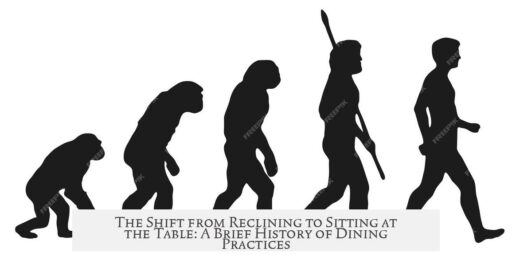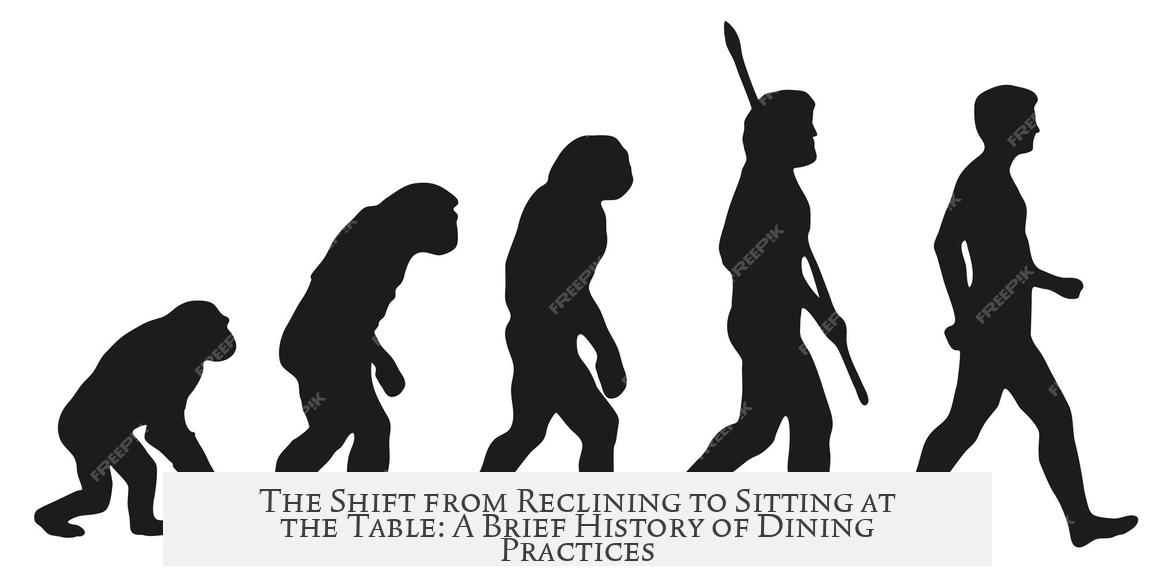The practice of eating at a table while sitting upright began gradually as societies shifted away from ancient reclining customs, notably distinct from the reclining dining habits of the Greeks, Etruscans, and Romans. This transition became more prominent in late antiquity and the medieval period, evolving due to cultural, social, and practical factors that moved dining from ceremonial banquets toward everyday seated meals.
In ancient Greece and Rome, reclining while eating was standard, especially in social and ritual contexts. The Greeks likely inherited reclining at the table from Near Eastern traditions around the end of the Dark Age (circa 700 BCE). The Etruscans, influential neighbors to early Rome, had already adopted this custom by the 7th century BCE, as shown in tomb artwork. Rome, in turn, absorbed this practice, with evidence such as the ritual lectisternium described by Livy in 399 BCE, where gods’ images reclined at banquets. Roman literature, including works by Plautus and Cicero, confirms that reclining was widespread across social classes during formal meals.
Reclining was linked to social and cultural meanings beyond mere comfort. It required ample space, with specialized furniture called the triclinium, consisting of couches arranged around a low table. This setup was typical for banquets among companions, emphasizing communal dining and ritual significance. However, the practice was not common for everyday eating. Romans and Greeks generally ate quickly and lightly during the day, often on the move, without making use of heavy furniture.
The practice associated with luxury and wealth, but not exclusive aristocracy. Even freedmen reclined at table, demonstrating its wide acceptance. Public dining facilities, such as those in Athens and Rome, had spaces designed for reclining diners, showing the social importance of this custom.
The gradual shift toward eating at tables while sitting upright emerged as the reclining tradition declined. This change aligns with broader transformations after the Roman Empire’s fall, when dining customs simplified and became more practical. The decline of public banquets and the triclinium furniture meant that smaller, more functional tables and chairs became preferred.
By the early medieval period, the elevated status of reclining dining faded. People increasingly dined sitting upright on chairs at tables. This posture suited the simpler, less ceremonial meals that became common in private households. Upright seating also fit better with changing room designs and furniture that accommodated smaller, more frequent meals rather than large festive occasions.
The shift had practical advantages. Sitting upright at a table allowed for easier access to food and drink without the elaborate setup reclining required. It also reflected changes in social life where large feasts diminished in importance, and eating became an everyday, functional activity instead of a ritual.
In sum, eating while seated upright at a table does not have a single starting point but represents a long process beginning after antiquity. The practice replaced reclining during formal meals by late antiquity and became the norm through medieval Europe. This evolution reflects practical adaptations, shifts in social customs, and the decline of the ritually charged banquets that characterized earlier Mediterranean cultures.
| Period | Dining Practice | Context |
|---|---|---|
| Greek & Etruscan (~700 BCE – 1st c. BCE) | Reclining at table | Ritual banquets, social status, communal dining |
| Roman Republic & Empire (5th c. BCE – 4th c. CE) | Reclining customary for elites and commoners during formal feasts | Banquets with triclinium, social ritual |
| Late Antiquity (4th – 7th c. CE) | Decline of reclining; gradual adoption of seated meals | Simplification of customs; less ritualized dining |
| Medieval Europe (after 7th c. CE) | Sitting upright at tables standard | Everyday meals, smaller household settings |
Key points to remember:
- The custom of reclining at meals began with Near Eastern influence, adopted by Greeks and Etruscans, then Romans.
- Reclining was a social and ritual practice, tied to communal feasts and luxury, not common for everyday eating.
- The transition to upright seating started in late antiquity as dining customs grew less formal.
- By medieval times, eating while seated upright at a table became the norm, reflecting changes in social structure and practicality.
- The exact timing varied by region but represents a centuries-long evolution rather than a single event.




